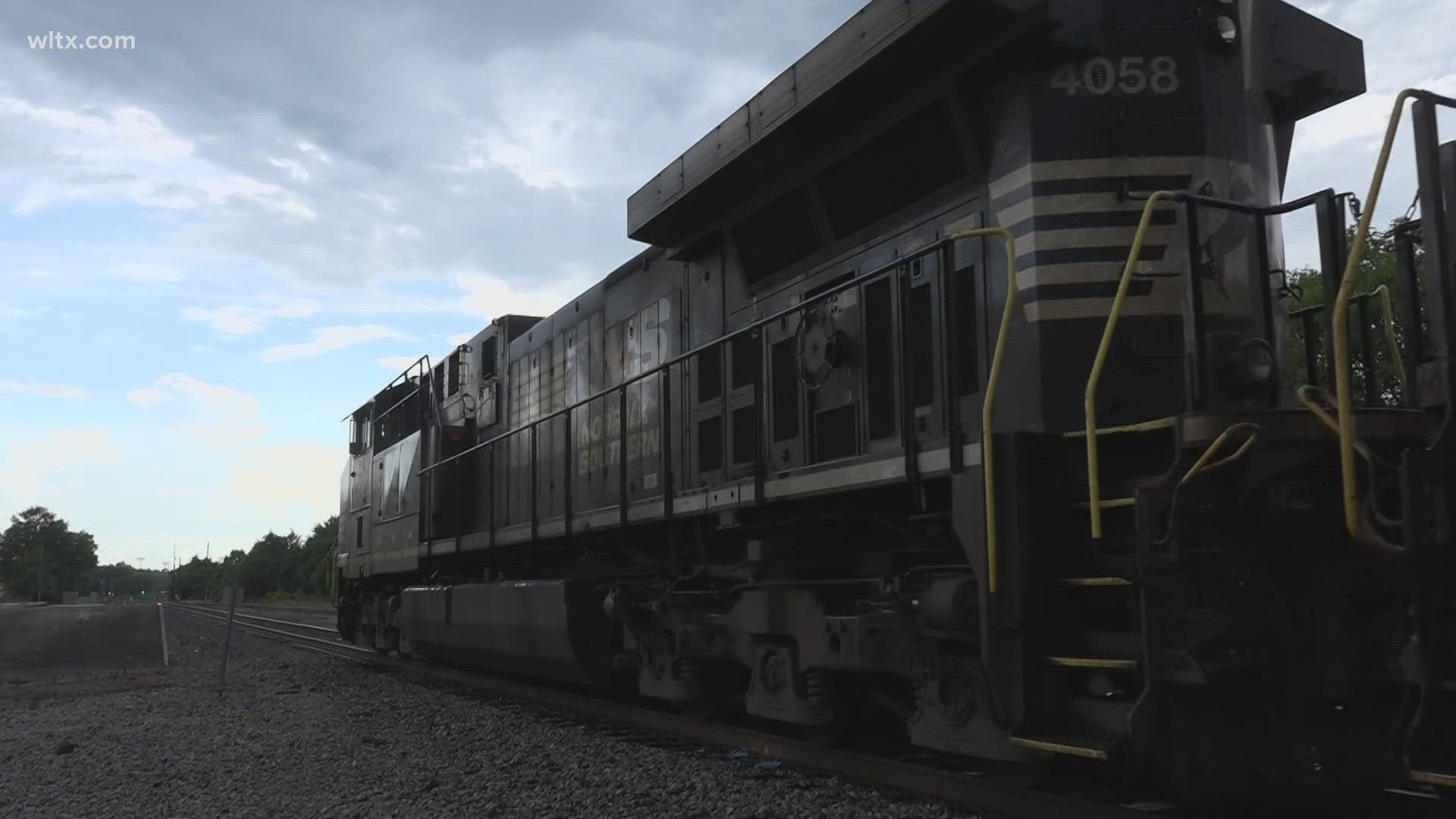COLUMBIA, S.C. — For the past seven years, the city of Columbia has been developing a plan to make train crossings quieter along 11 corridors.
In a meeting Tuesday night, local leaders said that they still need to secure $1.8 million worth of funding for the project and get $1.8 million in the state budget approved. Columbia City Council needs to pass a vote in favor. This is only for the first quiet zone corridor of 11.
"Majority of the time, it'll be loud horn sounds or the train stopping at a complete stop, like a loud screeching sound," Peebles general manager Von McQuillar said.
Business owners and locals are used to hearing trains chugging through Columbia, but some can't bear the noise.
The city of Columbia said it's heard complaints, and leaders are trying to do something about it.
"Constituents throughout the city were concerned about the Train Horn Rule from 2005, which requires the trains as they start coming in towards an intersection, a road crossing, to sound their horn within 15-20 seconds before they enter the actual road crossing," said Dana Higgins, the engineering director for Columbia.
Higgins said the city has been working with Norfolk Southern, the South Carolina Department of Transportation and the Federal Rail Administration (FRA) to make 14 rail crossings from Gadsden Street to Beltline Boulevard quiet zones. This means no train horns will sound, but extra safety measures will be implemented to compensate.
"Each intersection, as far as the city is concerned, will have upgrades for ADA [Americans with Disabilities Act] mats and the pedestrian sidewalks would be improved. Lots of updates to the MUTCD [Manual on Uniform Traffic Control Devices] signage, just making sure that both vehicle and pedestrians, all modes of transportation, are alerted to the fact that the train won't be sounding their horn," Higgins said.
The FRA said that local officials are primarily responsible for establishing quiet zones, and they may do so to reduce disruptions for local residents and improve the quality of life. This process generally involves coordination with FRA, state DOT, and the railroad that operates over the crossing to determine what supplementary safety measures or alternate safety measures will be needed to compensate for the loss of a train horn warning and how the cost of implementing these might be shared between the locality and the railroad.
Norfolk Southern shared the following in a statement:
"Norfolk Southern’s chief concern at crossings is safety. Projects like this highlight the importance of crossing safety and how railroads and communities can work together to keep everyone safe."
Nearby business owners said they support it.
"I think it's a good thing for the people that - the residents that stay by the train tracks that can't get any sleep at night," McQuillar said. "They got to wake up early, or the students that got to study long times."
"I think, if you've got cross arms on the railroad track, that that eliminates a lot of the need for the noise," said Eli Brightbill, the owner of Lyons General Store.
If everything goes as planned, Higgins said that the construction would take 18 to 24 months.
According to city leaders, this quiet zone would also need to be maintained every year at a cost of $68,000.

